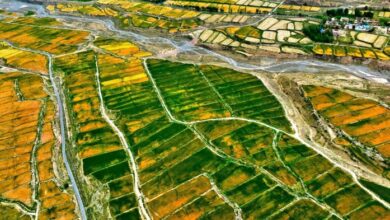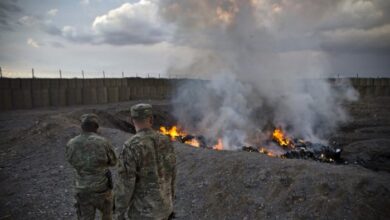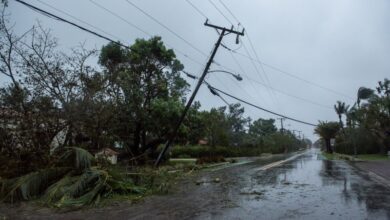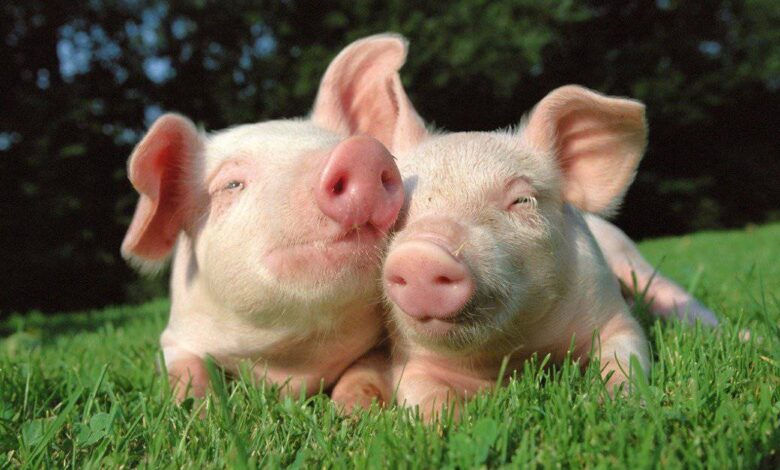
When Thousands of Hogs Are Your Neighbors: A Look at the Impact of Industrial Farming
When thousands of hogs are your neighbors, the idyllic image of rural life takes on a whole new meaning. The rise of industrial-scale hog farming has brought economic benefits to many rural communities, but it has also sparked concerns about the environmental impact, potential health risks, and the delicate balance between agricultural interests and local residents.
This blog post explores the multifaceted challenges and opportunities presented by the growing presence of large-scale hog farms. We’ll delve into the economic realities, environmental consequences, and the human-animal interface that arises when these massive facilities become a part of the community fabric.
The Impact of Hogs on Local Communities
The presence of large-scale hog farming operations can significantly impact local communities, bringing both economic benefits and potential downsides. While these farms contribute to the agricultural landscape and rural economies, their environmental and health implications raise concerns. This article explores the multifaceted impact of hog farming on local communities, examining its economic, environmental, and health aspects.
Economic Benefits of Hog Farming
Hog farming can provide substantial economic benefits to rural communities. It generates employment opportunities in various sectors, including farm labor, feed production, transportation, and processing. The industry also contributes to local tax revenue, supporting public services and infrastructure. Moreover, hog farms often purchase supplies from local businesses, boosting the local economy.
Potential Downsides of Hog Farming on Local Economies
While hog farming can bring economic benefits, it can also have negative impacts on local economies. The concentration of hog farms in certain areas can lead to competition for resources, such as water and land, potentially driving up prices and limiting opportunities for other industries.
Additionally, the potential for environmental damage, as discussed later, can lead to decreased property values and tourism revenue.
Environmental Impacts of Hog Farming
Hog farming practices have significant environmental impacts, particularly concerning water quality and air pollution. Large-scale hog farms generate vast amounts of manure, which can contaminate water sources if not managed properly. Runoff from manure lagoons can lead to eutrophication, depleting oxygen levels in water bodies and harming aquatic life.
Moreover, the release of ammonia and hydrogen sulfide from manure can contribute to air pollution, impacting human health and the environment.
The environmental impact of hog farming is often compared to other agricultural practices. While livestock production generally contributes to greenhouse gas emissions, the intensive nature of industrial hog farming, with its high animal density and manure management practices, can amplify these impacts.
Health Risks Associated with Hog Farming
Living near hog farms can pose health risks due to the potential exposure to air and water contaminants. Airborne particles from manure can trigger respiratory problems, particularly in individuals with pre-existing conditions. Additionally, the presence of pathogens in contaminated water sources can lead to waterborne illnesses.
Hog Farming Practices and Regulations

Hog farming practices play a significant role in the environmental impact of the industry. Understanding these practices and the regulations governing them is crucial for mitigating their negative effects and ensuring sustainable hog production.
Types of Hog Farming Practices, When thousands of hogs are your neighbors
Different hog farming practices have varying environmental impacts. These practices range from traditional, small-scale operations to large-scale, industrialized facilities.
- Pasture-Based Systems:In this practice, hogs are raised in outdoor pastures, allowing them to forage naturally and reducing reliance on concentrated feed. This system generally has a lower environmental footprint compared to confinement operations due to reduced manure management needs and less reliance on antibiotics.
- Confinement Operations:These facilities, also known as factory farms, house a large number of hogs in confined spaces. This practice often involves intensive feed production and necessitates extensive manure management systems. The high density of animals in confinement operations can lead to increased pollution risks, including air and water contamination.
- Free-Range Systems:Free-range hog farming allows hogs to roam freely in outdoor areas, often with access to forested areas or natural habitats. This practice aims to promote animal welfare and minimize environmental impact, although it can still present challenges in terms of manure management and potential habitat disturbance.
Living next to thousands of hogs can be a real adventure, especially when you’re trying to figure out which oink belongs to which piglet. It’s a bit like the cryptocurrency market, where you hear whispers of a new moon launch and then suddenly everyone’s buying, only to see prices crash when the news breaks, just like in the article buy the rumour sell the news dogecoin erases recent gains.
But at least with the hogs, you know there’s a good chance you’ll be smelling bacon soon.
Environmental Impact of Different Hog Farming Practices
The environmental impact of hog farming practices varies significantly depending on the type of operation.
| Practice | Environmental Impact |
|---|---|
| Pasture-Based | Generally lower environmental impact due to natural foraging, reduced feed requirements, and lower manure management needs. |
| Confinement Operations | Higher environmental impact due to intensive feed production, large-scale manure management challenges, and potential for air and water pollution. |
| Free-Range | Moderate environmental impact, with potential for habitat disturbance and manure management challenges, but generally promotes animal welfare and reduces reliance on antibiotics. |
Regulations and Policies
Various regulations and policies are implemented to mitigate the negative effects of hog farming, particularly those associated with confinement operations.
Living next to thousands of hogs is definitely an experience, to say the least! The constant oinks and the pungent aroma are a constant reminder of their presence. It’s a whole different world when you consider the recent news about the MHA body issuing norms for crypto-related crimes , which is a far cry from the hog-filled landscape I’m accustomed to.
I guess it’s all about perspective, and the constant reminder of the wild world outside my door, even if it’s just a hog farm.
- Air Quality Regulations:These regulations aim to control emissions from hog facilities, such as ammonia, hydrogen sulfide, and particulate matter, which can contribute to air pollution and respiratory problems. Examples include limits on the number of animals per facility, requirements for odor control systems, and regulations on manure management practices.
- Water Quality Regulations:Regulations designed to protect water resources from contamination by hog waste include restrictions on the placement of facilities near waterways, requirements for manure storage and application, and limits on nutrient runoff from hog operations. These regulations are crucial for preventing water pollution and protecting aquatic ecosystems.
Living in the country has its charm, but when thousands of hogs are your neighbors, it can feel like a scene out of a horror movie. The news about the alex jones damages trial begins over his false claims sandy hook shooting was a hoax is a stark reminder that sometimes the real world is far more terrifying than any fictional nightmare.
It’s hard to imagine the pain and suffering those families have endured, and it’s a constant reminder that even in the face of tragedy, there are those who would spread lies and inflict further harm. Back to my hog problem, I’m thinking maybe a fence isn’t enough – I might need to invest in a moat.
- Animal Welfare Regulations:Regulations focused on animal welfare address issues such as space allowance, access to food and water, and veterinary care. These regulations aim to ensure humane treatment of hogs and minimize stress and disease.
Effectiveness of Existing Regulations
The effectiveness of existing regulations in protecting the environment and public health varies depending on the specific regulations, enforcement mechanisms, and the industry’s compliance.
- Challenges in Enforcement:Limited resources, lack of consistent monitoring, and challenges in proving violations can hinder the effectiveness of regulations. Additionally, loopholes in regulations or weak enforcement can allow some facilities to operate outside the intended guidelines.
- Industry Influence:The influence of the agricultural industry on policy-making can sometimes result in regulations that are not sufficiently stringent to protect the environment and public health. This can lead to a situation where the industry’s interests are prioritized over the well-being of communities and the environment.
- Need for Continuous Improvement:Ongoing research and monitoring are essential to assess the effectiveness of existing regulations and identify areas for improvement. As the industry evolves and new technologies emerge, regulations must adapt to ensure continued environmental protection and public health safeguards.
The Human-Animal Interface
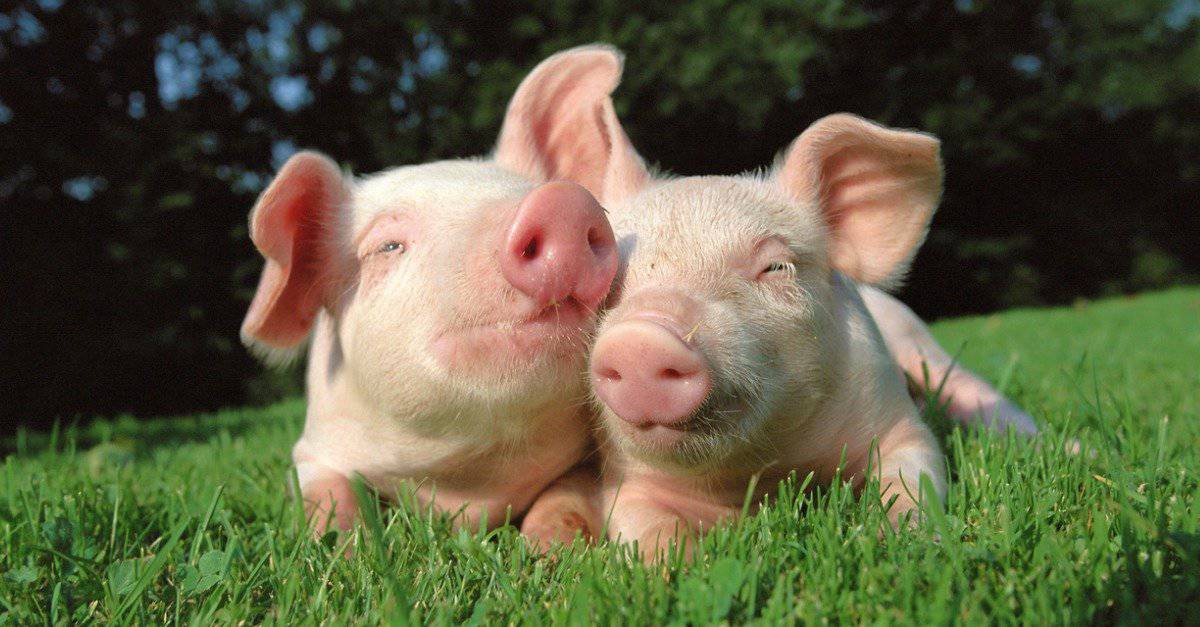
The close proximity of large-scale hog farming operations to residential areas creates a complex interplay between human and animal interests. This proximity often results in challenges and conflicts, raising important questions about the shared space and the need for harmonious coexistence.
The Challenges of Living Near Hog Farms
Living near large hog farms presents a unique set of challenges for residents. The most common concerns include:
- Odor:The strong odor emanating from hog farms can be pervasive, affecting air quality and negatively impacting residents’ quality of life. This odor is often described as a combination of manure, ammonia, and decaying organic matter. The presence of this odor can make it difficult to enjoy outdoor activities, reduce property values, and even cause respiratory problems in some individuals.
- Noise:The constant noise from hog farms, including the vocalizations of the animals, the operation of machinery, and the movement of trucks, can disrupt sleep, create stress, and negatively impact the overall peace and tranquility of the neighborhood. This noise pollution can also be a significant source of annoyance for residents.
- Environmental Concerns:The large-scale production of hogs can have a significant impact on the environment. The disposal of manure and the runoff of waste from hog farms can contaminate water sources and contribute to air pollution. This can lead to concerns about the health of local ecosystems and the safety of drinking water.
- Disease Transmission:While the risk of disease transmission from hogs to humans is generally low, the proximity of hog farms can increase the potential for exposure to certain pathogens. This is particularly true for individuals who work or live near hog farms and may have close contact with the animals.
- Property Values:The presence of hog farms in close proximity to residential areas can negatively impact property values. This is due to the perception of odor, noise, and environmental concerns associated with hog farming. The decline in property values can have significant financial consequences for residents.
Potential for Conflict Between Hog Farmers and Local Residents
The challenges faced by residents living near hog farms can often lead to conflict with the farmers. These conflicts can arise from a variety of factors, including:
- Lack of Communication:A lack of open and effective communication between hog farmers and residents can exacerbate tensions. This can lead to misunderstandings, mistrust, and a sense of being unheard.
- Different Priorities:Hog farmers often prioritize the economic viability of their operation, while residents prioritize their quality of life and the health of their community. This difference in priorities can make it difficult to find common ground and reach mutually acceptable solutions.
- Lack of Regulation:Insufficient or poorly enforced regulations governing hog farming practices can contribute to conflict. This can lead to situations where residents feel their concerns are not being addressed and that the farmers are not being held accountable for their actions.
- Perceptions and Misconceptions:Both farmers and residents may hold preconceived notions or misconceptions about each other’s motivations and concerns. These perceptions can create barriers to understanding and compromise.
Community Collaboration for Resolution
Addressing the concerns of both hog farmers and local residents requires a collaborative approach. Here are some ways communities can work together to find solutions:
- Open Communication:Establishing open and transparent communication channels between farmers and residents is crucial. This can involve community meetings, town hall forums, and online platforms for sharing information and addressing concerns.
- Mediation and Conflict Resolution:When conflicts arise, mediation and conflict resolution processes can help facilitate dialogue and find mutually acceptable solutions. This involves bringing in neutral third parties to help facilitate communication and identify common ground.
- Community-Based Solutions:Involving residents in the development of solutions is essential. This can include exploring community-based initiatives, such as odor control measures, noise reduction strategies, and environmental monitoring programs.
- Enhancing Regulations:Strengthening regulations governing hog farming practices can provide a framework for addressing environmental and public health concerns. This can involve setting limits on animal density, waste management practices, and odor control measures.
- Community Education:Educating both farmers and residents about the concerns of the other party can help build understanding and empathy. This can involve workshops, presentations, and educational materials that address the impacts of hog farming and the needs of both communities.
Resolving Disputes Through Collaborative Processes
A collaborative process for resolving disputes between hog farmers and residents involves several steps, as illustrated in the flowchart below:
| Step | Description |
|---|---|
| 1. Identification of the Issue | The process begins with the identification of the specific issue or concern that is causing conflict. This could involve a range of issues, such as odor, noise, or environmental concerns. |
| 2. Communication and Dialogue | Open and transparent communication is essential. This involves both parties sharing their perspectives, concerns, and potential solutions. This step may involve facilitated discussions, community meetings, or online forums. |
| 3. Mediation and Facilitation | If direct communication fails to resolve the issue, mediation or facilitation can be employed. A neutral third party helps facilitate dialogue and explore potential solutions that address the concerns of both parties. |
| 4. Agreement and Implementation | Once a mutually acceptable solution is reached, it is formalized into an agreement and implemented. This may involve changes to farming practices, odor control measures, or other actions to address the specific concerns. |
| 5. Monitoring and Evaluation | Regular monitoring and evaluation are crucial to ensure the effectiveness of the agreed-upon solution. This may involve tracking odor levels, noise levels, or other relevant indicators. |
| 6. Continuous Improvement | The process is ongoing and requires continuous improvement. Both parties should be willing to adapt and make adjustments as needed to ensure the long-term effectiveness of the solution. |
Concluding Remarks: When Thousands Of Hogs Are Your Neighbors
The future of hog farming rests on finding a balance between agricultural productivity and environmental sustainability. By embracing innovative technologies, implementing stricter regulations, and fostering open communication between farmers and communities, we can work towards a future where hog farming contributes to both economic prosperity and a healthy environment.


